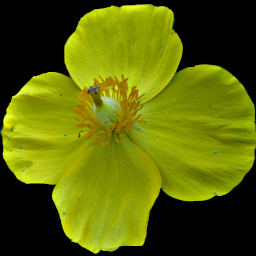
 Every botanical writer feels compelled to mention that this species is neither an artichoke nor from Jerusalem. One wonders whether anyone in the modern age has ever made that mistake. This is quite obviously a sunflower, though one more noted for its edible tuber than for its seeds. The flowers are delightful, to butterflies as well as to humans. The plant is very similar to Thin-Leaved Sunflower (H. decapetalus), but note the more robust leaves, hairy stem, and shorter bracts.
Every botanical writer feels compelled to mention that this species is neither an artichoke nor from Jerusalem. One wonders whether anyone in the modern age has ever made that mistake. This is quite obviously a sunflower, though one more noted for its edible tuber than for its seeds. The flowers are delightful, to butterflies as well as to humans. The plant is very similar to Thin-Leaved Sunflower (H. decapetalus), but note the more robust leaves, hairy stem, and shorter bracts.
Flowers. Heads terminal on branching stalks. Disk flowers golden; rays (about 13) golden, darkening to pale orange toward center. Bracts about as long as the disk.
Leaves. Very rough; mid-green above, paler below; upper nearly sessile, lower on short petioles with tapering wings; mostly opposite, but upper alternate; upper nearly entire, lower with shallow teeth.
Stem. Narrow but very strong; purple most of its length; very hairy; branching, especially toward ends.
Gray describes the genus and the species:
HELIÁNTHUS L. Sunflower. Heads many-flowered; rays several or many, neutral. Involucre Imbricated, herbaceous or foliaceous. Receptacle flat or convex; the persistent chaff embracing the 4-sided and laterally compressed smooth achenes, which are neither winged nor margined. Pappus very deciduous, of 2 thin chafly scales on the principal angles, and sometimes 2 or more small intermediate scales. — Coarse and stout herbs, with solitary or corymbcd heads, and yellow rays; flowering toward autumn. (Named from helios, the sun, and anthos, a flower.)
§2. Perennials; receptacle convex or at length low-conical; lower leaves usually opposite.
Involucre looser, the bracts more acuminate or elongated or foliaceous.
Leaves all or most of them opposite, 3-nerved.
Leaves longer-petiolate, thinnish or soft, coarsely serrate, commonly broad; bracts loose, hirsute-ciliate.
H. tuberosus L. (JERUSALEM ARTICHOKE.) Pubescent or hirsute, 1.5-3.5 m. high; leaves ovate or subcordate to oblong-lanceolate, acuminate, scabrous above, minutely pubescent or cinereous beneath; bracts lanceolate, attenuate, little exceeding the disk; rays 12-20.—N. Y. to Minn., westw. and southw.; often cultivated, and introduced eastw.
–
In his Wild Flowers of New York (1914), Chester Albert Reed gives us some of the lore of this beautiful sunflower:
This is an interesting native plant often known as the Wild Sunflower. Indians and early colonists used its tuberous roots much as we use potatoes today. It was also carried abroad and cultivated extensively, particularly in Italy, where it was known as Girasole Articocco (Sunflower Artichoke), from which name it was corrupted into the Jerusalem Artichoke as we know it now. The stalk, which grows from six to twelve feet in height is very rough and the three-ribbed, toothed-edged leaves, the lower ones of which are set oppositely on the stalk, are also rough,—this roughness presumably being to discourage crawling insects from reaching the summit. The several flower heads are two or three inches across and consist of from a dozen to twenty rays about a greenish-yellow center. This species naturally grows in somewhat moist thickets but is often seen in or about old gardens where it continues to grow as a reminder of the days when it was cultivated for food.










